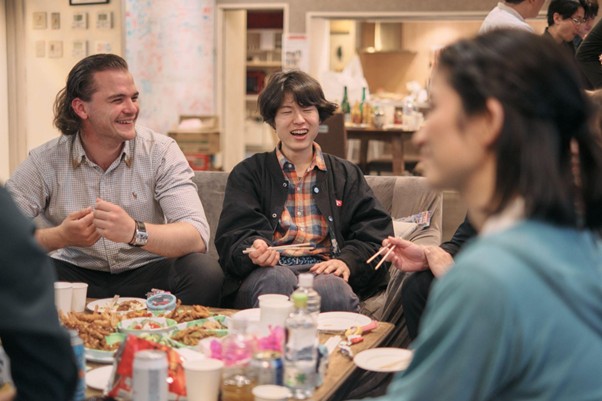An Inside Look at One of Japan’s Most International Co-Living Networks
Living abroad for the first time often brings various challenges, particularly in countries where language and housing systems differ significantly from those in one’s home country. In Japan, these challenges are well-known, especially for international residents unfamiliar with the language or culture.
OAKHOUSE, one of Japan’s largest co-living providers, offers a housing option that appeals to those navigating this unfamiliar environment. Founded in 1992, the company manages over 4,800 rooms across more than 200 properties in Tokyo, Osaka, Kyoto, and other cities. OAKHOUSE provides a wide range of options, from dormitory-style accommodations to private studio units, but it is the resident community that defines the company’s distinctive character.

Diverse, International Resident Base
According to internal data, approximately 66% of OAKHOUSE residents are non-Japanese, representing 96 different nationalities. Among these, residents from France and the United States are among the largest foreign groups, alongside individuals from other European and Asian countries.
Such international representation is rare in the Japanese housing market, where foreigners often encounter high entry barriers, including complex rental contracts, language limitations, and the need for a Japanese guarantor. OAKHOUSE has developed systems that reduce these burdens and encourage broader participation.
Mr. Katayama of the Sales Promotion Department, who has played a central role in developing OAKHOUSE’s co-living concept, explains that the company emphasizes daily communication and exchange among residents.
“We operate with the philosophy of ‘enjoy living’. More than 300 resident events are organized annually to encourage interaction.”

Resident Demographics
The majority of residents are in their 20s or 30s, with those aged 25–29 comprising the largest age group at 26%. The community also includes a range of older residents, including individuals in their 60s and 70s. For example, one current resident teaches at a famous university in Tokyo, while another previously worked as an executive at a global technology company.
Occupational backgrounds vary widely. Many residents are full-time employees, students attending language schools or universities, part-time workers, freelancers, and individuals on short-term work contracts. This broad range of experiences reflects the flexibility and accessibility of the co-living model that OAKHOUSE has cultivated.

English-Friendly, Multilingual Living
In many OAKHOUSE properties, English serves as a common language, allowing communication among residents from different countries. While Japanese remains the primary language in formal contexts, English is frequently used in communal spaces such as kitchens and lounges.
Staff members are generally able to assist in English, and residents often participate in informal language exchange sessions or cultural events. These interactions promote not only communication, but also community building across diverse backgrounds.
An Accessible Option for Foreign Residents
Compared to conventional rental systems in Japan — which may involve high deposits, complex paperwork, and long-term commitments — OAKHOUSE offers a simplified process. Contracts are designed to be flexible, and in many cases, new residents are able to move in within just a few days.
Although co-living may not be suitable for every individual, the model is increasingly appealing to those seeking a more social, international, and adaptable living environment.
For many, this housing option has provided more than just a place to stay — it has served as a starting point for building a life in Japan with a supportive community.










